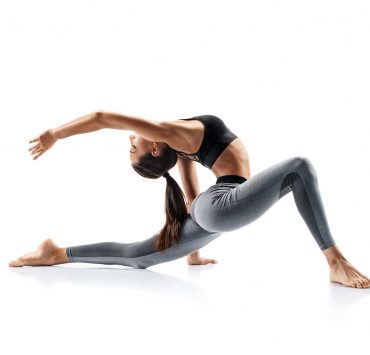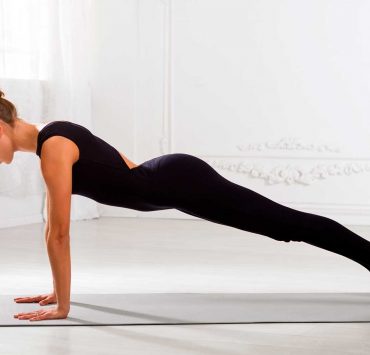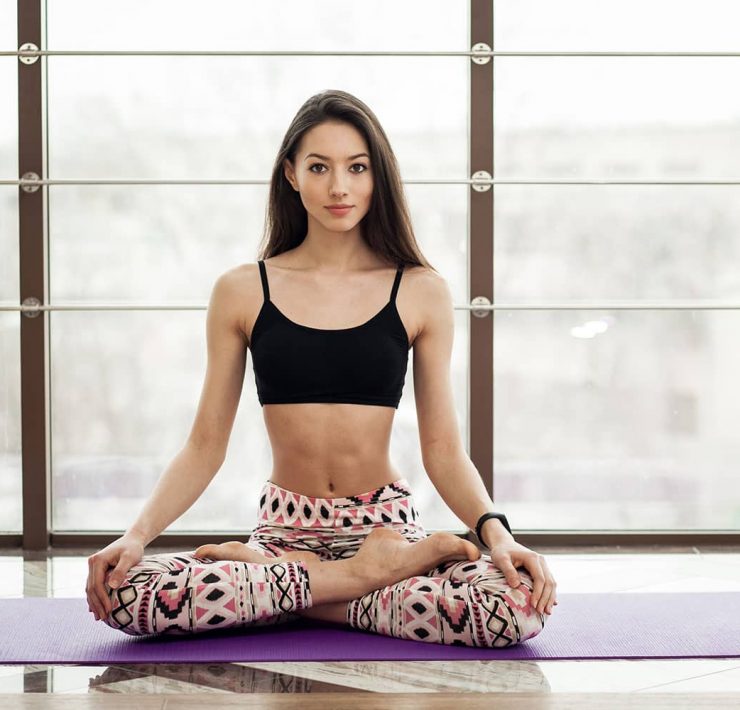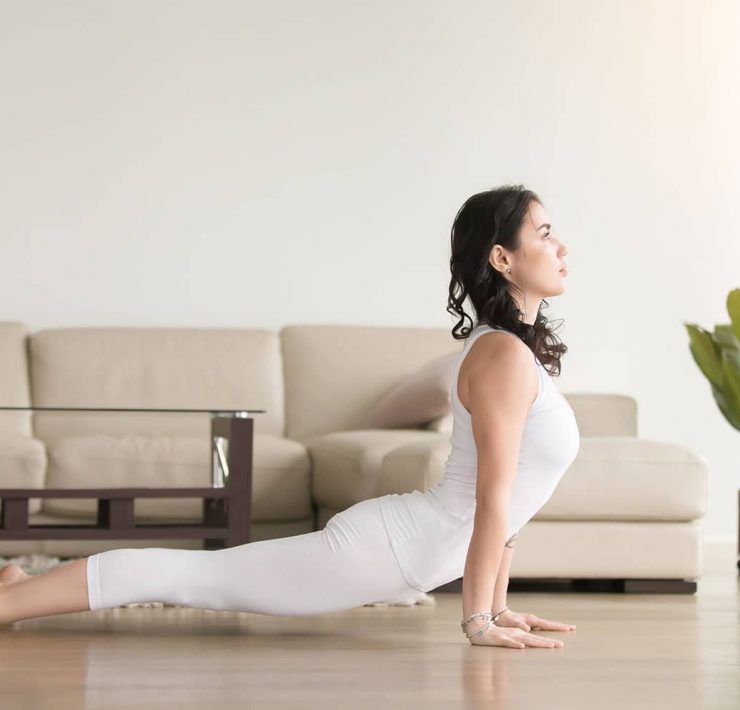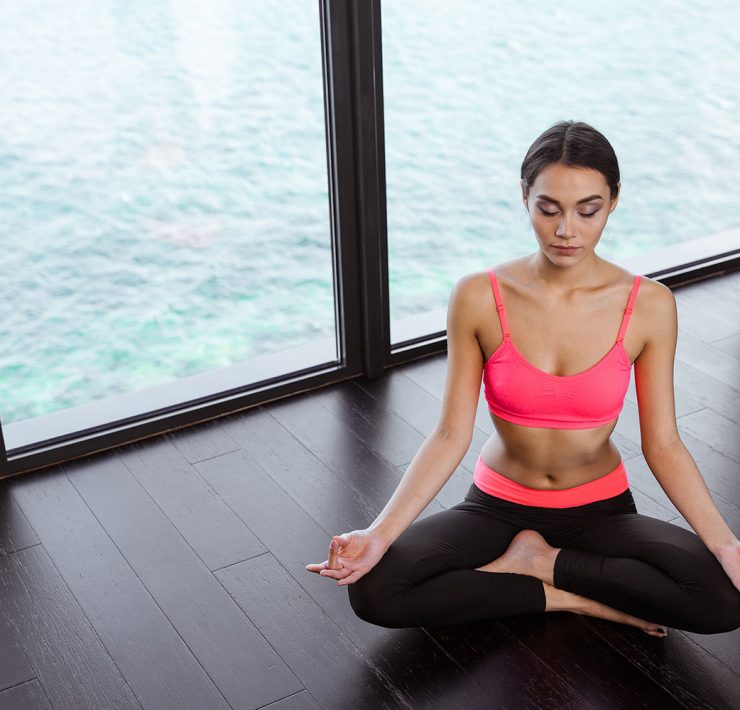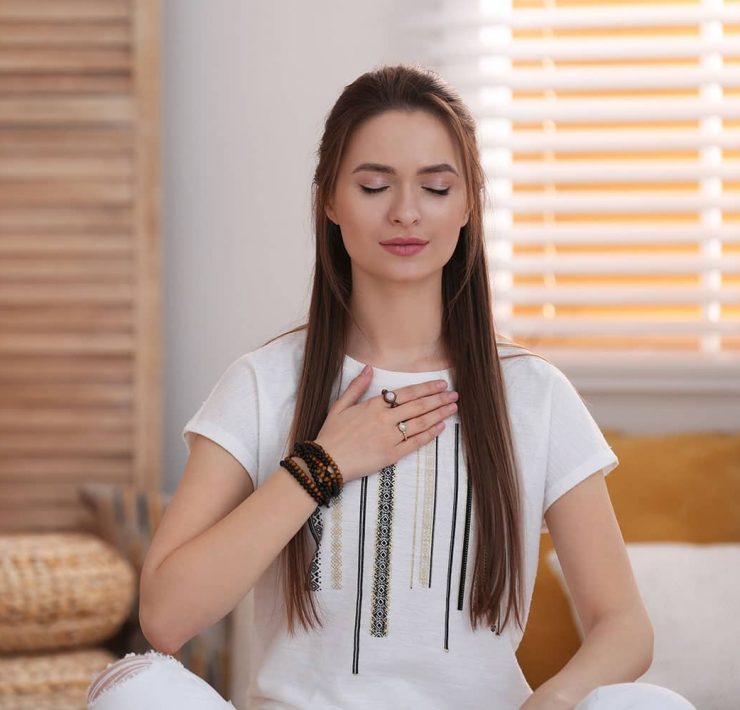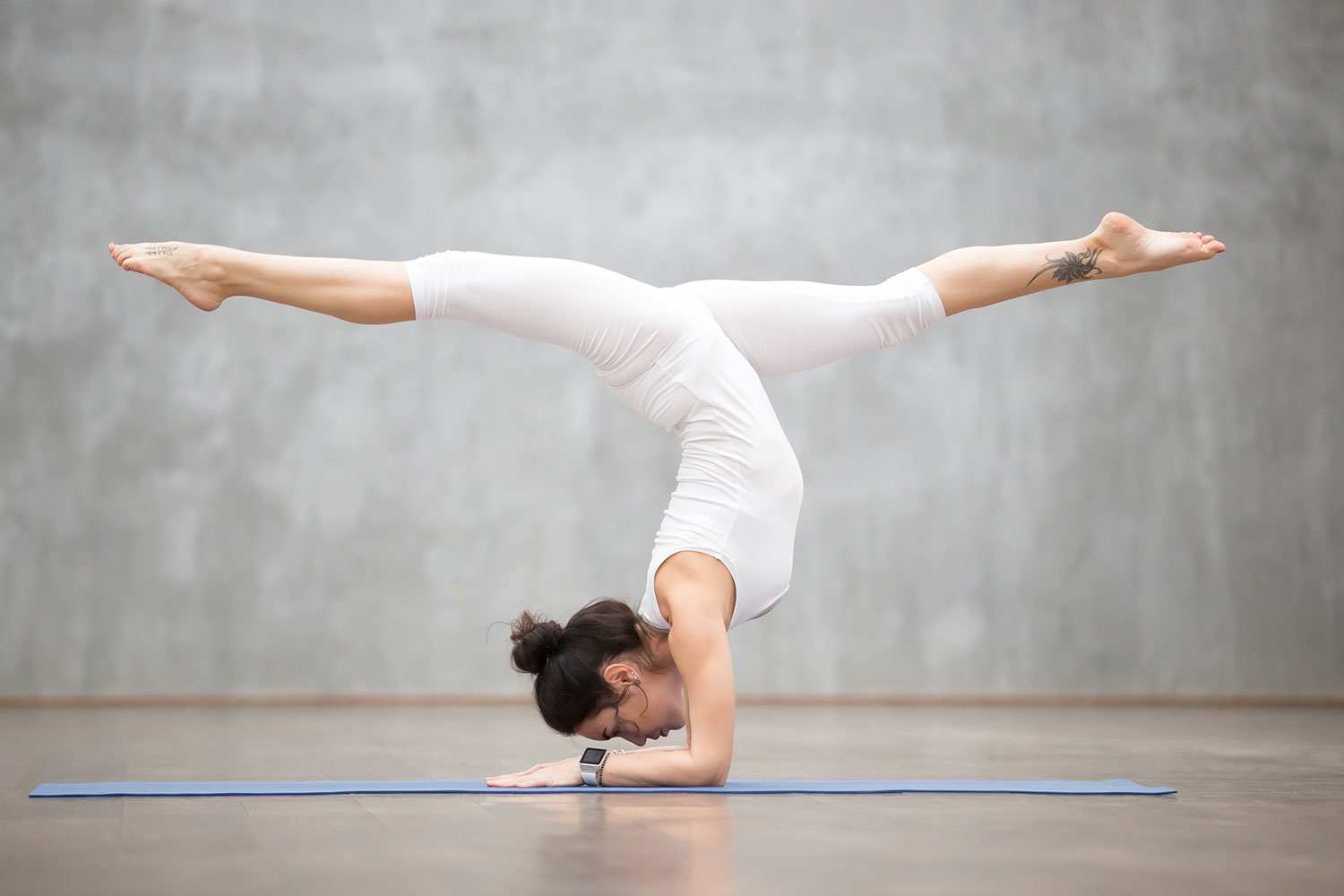
Yoga, meditation, and spirituality are at the top of the…
Arm balances are the most intriguing postures for ambitious yogis. These poses challenge our natural state of being by putting our foundation in our hands, and provide both a physical and mental challenge. There are a lot of components that go into being successful at performing an arm balance, but if you keep these guidelines in mind as you are going about your practice, you’ll be able to push your boundaries and take them to the next level.
Create a Strong Base with Your Hands

Your hands are one of your most important tools when it comes to arm balances. As your only connection to the ground, you want them to create as sturdy of a base as possible.
Naturally, when you place your palms on the ground, your fingers likely won’t be very spread out. As you are working on your arm balances, you need to consciously remind yourself to spread your fingers out wide to create as large of a base as possible. This will help you support your body weight much more than when your hands are narrower, as it helps distribute out the weight.
Once you are supporting your body with your hands, it is important to focus on where exactly you are placing your weight. If you think of yourself in Crow Pose (Bakasana) or Handstand (Adho Mukha Vrksasana), you can imagine that placing your weight towards the bottom of your palms may make it trickier to maintain your balance, as your body will want to fall backwards. Instead, focus on putting your weight more forward, into the area where your upper palm meets the bottom of your fingers (known as the metacarpophalangeal joint). This will help prevent you from falling back, and will make the arm balances much more accessible.
Engage Your Core

While your hands keep you connected to the ground and stable, your core is the center of power that allows you to physically maintain your body in a posture that goes against your natural balance.
As you are moving into an arm balance, it is important to engage your core by keeping your spine and torso stable. This is done by drawing your belly in, and elongating your tailbone down. Your arms can only handle so much work. Engaging your core helps take some of the pressure off of your arms, and will also help you take the pose to the next level.
In order to improve your arm balance practice, it is vital that you continue to build up your core strength. This could be through targeted yoga poses that fire up your abs, such as Plank Pose (Palakasana) or Bird Dog Crunches. You may also want to work on your strength outside of the yoga studio, such as through weight training or pilates. Regardless of how you choose to strengthen your core, it is necessary to do so consistently if you want to continue to explore new arm balances and reach new limits.
Keep Your Gaze Forward

Your point of focus is incredibly important when it comes to maintaining your balance. In many arm balances, it is natural to want to look down at the floor, or even back behind you. However, when you do this, you are further disrupting your balance, making it far easier to fall out of the pose. By looking down or back, you could end up sending your weight too far forward and tumbling out of the posture.
Picking a spot for your gaze that it ahead of you will help you feel more stable and lifted in the pose, rather than unsteady. As you move into the arm balance, focus on a spot ahead of you to maintain your drishti gaze. You may find that your gaze was the one thing keeping you from staying steady and balanced in certain poses!
Don’t Neglect the Legs

The focus in arm balances are often on the arms and the core, so it’s easy to forget about the rest of the body. However, it is just as important to focus on engaging the legs as it is the core and arms.
Regardless of the positioning of your legs in an arm balance pose, they need to remain active. In Crow Pose, for example, you should be actively lifting your pointed toes towards your glutes. In the challenging Firefly Pose (Tittibhasana), it is necessary to consistently squeeze your outer arms with your inner thighs in order to stay balanced. If your legs are limp or unstable in these poses or others, it will only be more difficult for you to maintain the posture, and you will put extra pressure on your arms and core. By keeping them active, you can give yourself the opportunity to reach the fullest potential of the pose.
Lengthen Your Neck

As you are fixed on staying balanced and stable, one of the first things to go out the window is a lengthened neck. Since arm balances can be difficult, you may find your upper body crunching together, feeling the pressure of a physically demanding posture.
By lengthening through your neck and drawing your shoulders away from your ears, a few things will happen. Perhaps most importantly, you’ll help prevent causing any strain from tension in your neck or shoulders, and will overall bring more ease to your body as you are performing these arm balances. It will also help engage the erector spinae muscles. These muscles are responsible for supporting the back by creating a long and strong spine, which will in turn make arm balances more accessible for you.
Continue to Build Arm Strength

If you want to further develop your arm balance practice, you need to do more than just work on the poses. As you know, arm strength is a central part of arm balance postures, and it is necessary to put in the time and effort to building up your strength in order to push the limits of your arm balances.
In order to work on your strength, look for yoga classes that are more physically demanding, such as a Vinyasa class, or a hybrid class that implements weight training techniques. You can also find a wide array of yoga classes on YouTube that are focused solely on building up upper body strength through a targeted practice. Start with this 20 minute class with Cat Meffan, or do your own search on the channels of some of your favorite teachers.
Of course, arm strength is something that you can work on outside of the yoga studio as well. There are many workouts that you can do in the comfort of your own home with a few sets of weights. You can also head to the local gym to work with equipment that will expand your possibilities.
Your arm balance practice hinges on the strength that you have in your upper body, so put in the necessary work if you really want to grow your practice.
Don’t Forget to Breathe

There is clearly a lot to think of when it comes to arm balances, and when you are in a physically demanding posture, it’s easy to forget one of the key components of your yoga practice—your breath. For many of us, it almost feels as though we will be more steady if we hold our breath as we balance. In reality, you’ll be able to maintain the pose for much longer if you are taking long, deep breaths.
To ensure you don’t forget your breath in a posture, make sure you are in the right headspace before you move into the pose. You hopefully have been prepping for the pose both physically and mentally with a few sequences, but take a moment in a comfortable seat to find your pranayama. Breathe deeply through your nose, and then exhale back through your nose. Your breath is your power in any asana, so it is crucial that you harness it before moving into an arm balance.
Be Patient

You simply won’t be able to hit an arm balance on your first try. Each different arm balance takes time to be able to reach, and you need to consistently dedicate yourself to working towards the pose. It can mentally wear you down, but remember to be patient and that yoga is a journey. While it can be hard to see your progress day to day, with consistent practice, in a few months you’ll be doing poses you never thought possible. Arm balances can be the most difficult challenge for yogis to attack, but if you are patient with yourself and your practice, you’ll be able to reach the goals you set for yourself.
Arm balances are not only physically demanding, but mentally challenging as well. If you can’t seem to do a pose you are working on, don’t let any negative thoughts get in the way of continuing on and working on it even more. As long as you stay dedicated, give yourself time and patience, and follow the rules above, you’ll be soaring in the air in no time.
What's Your Reaction?
Yoga, meditation, and spirituality are at the top of the list for writer and former nutritionist Amanda Carter. This devoted practitioner enjoys writing about health and wellness just as much as she enjoys living it.






